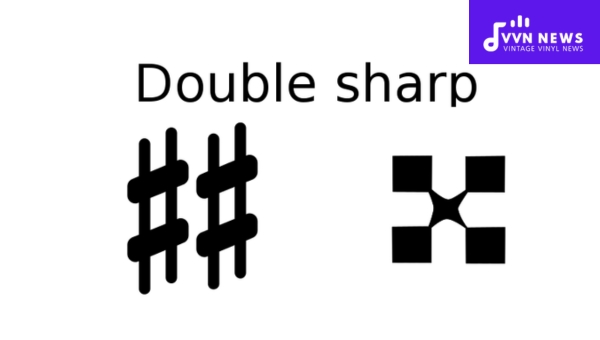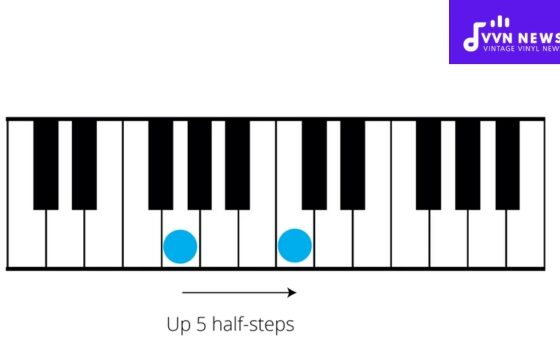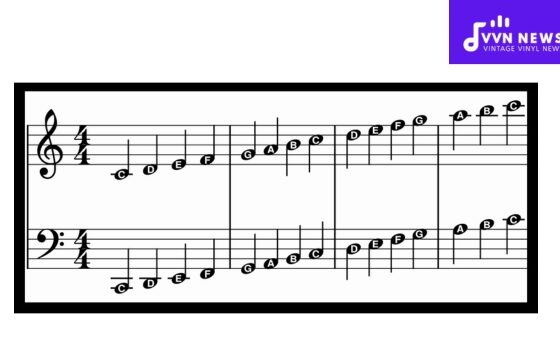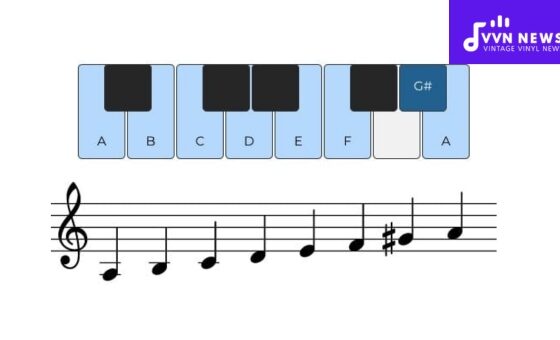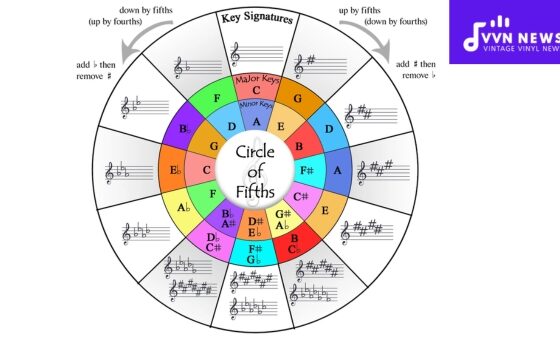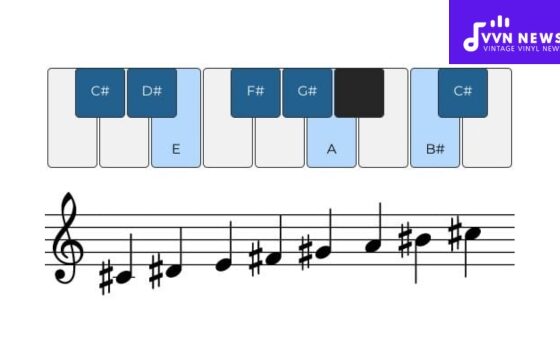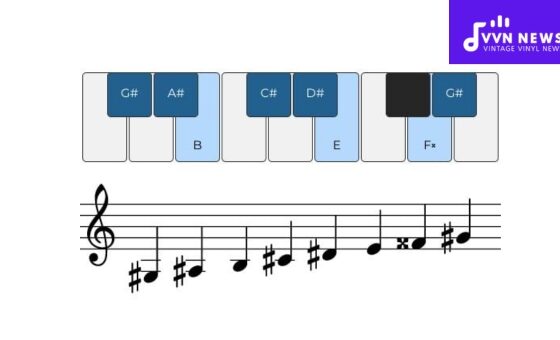In the intricate world of music theory, various symbols add depth and detail to our compositions. Among these is the double sharp sign in music, a fascinating notation that offers a unique twist to melodies.
This notation might seem a tad challenging at first glance, but with knowledge about its basic foundations, any music enthusiast can develop an appreciation for its utilization.
The power of musical notation lies not only in dictating the structure and rhythm of pieces but also in communicating rich emotion and intent.
Although it may seem complex initially, the role of the double sharp sign can open up a whole new dimension in your musical creations, adding layers of sophistication unseen before.
By unlocking these intricacies of musical language, we can elevate our pieces to new heights, with the double sharp serving as an amazing tool on this journey.
How does a double sharp affect a note in music?
In music notation, accidentals are used to alter the pitch of a note. The double sharp sign (????) is one such accidental that plays a critical role in modifying the pitch of a note by raising it two half steps or semitones.
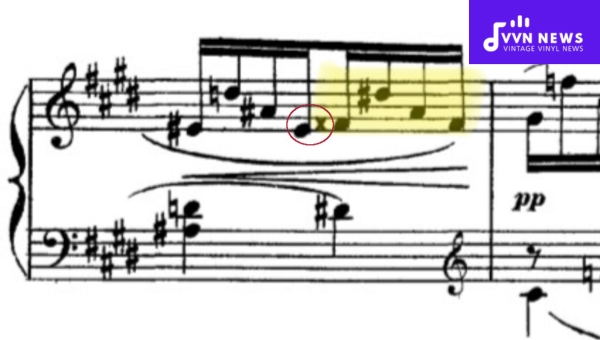
When a note is marked with a double sharp, it means that the pitch of the note should be raised by two-half steps compared to its natural state.
For instance, if we take the note C♯ and apply a double sharp, it would become C???????? (C double-sharp). This effectively raises the pitch of C♯ by two half steps, resulting in a new sound that is four half steps or one whole step higher than the original.
It’s important to note that the use of double sharps is relatively rare in music notation, but it becomes necessary when composers want to establish specific tonalities or express complex harmonic progressions within their compositions.
Determining how the double sharp affects notes allows musicians and performers to accurately interpret and correctly play pieces of music that feature this unique symbol.
Also Read: Discover the Most Popular Chord Progressions in Music
What is the purpose of the double sharp sign in music notation?
The double sharp sign (????) serves a crucial role in music notation by altering the pitch of a note, specifically raising it by two half steps.
This heightened pitch can lead to unique harmonies, tonalities, and musical expressions within a composition. Here are some key points to understand about the purpose of the double sharp sign:
- Expressing Sharpened Notes: In standard notation, a sharp sign (#) is used to raise a note’s pitch by one-half step. There are instances when raising a note just one-half step is not enough. The double sharp sign comes into play when there is a need to raise a note by two-half steps instead.
- Rare But Essential: While not as commonly used as other accidentals, such as sharps and flats, the double sharp sign is employed in music compositions where specific tonalities, harmonies, or melodic progressions are desired. Its infrequent usage adds depth and complexity to musical works.
- Enharmonic Equivalents: The concept of enharmonic equivalents relates to notes that sound the same but are written differently. For example, C♯ and D♭ are enharmonic equivalents because they produce the same pitch but have different notations. Similarly, C???????? and D???? are enharmonic equivalents as they represent the same pitch but have different representations.
- Notating Complex Key Signatures: In compositions with challenging key signatures that include many sharps or flats, using double sharps can simplify notation by aligning with certain intervals or harmonic progressions more clearly.
- Accidental Cancellation: When encountering a piece of sheet music with double sharps, it’s important to know how to cancel out this accident properly. To cancel out a double sharp, a natural sign (♮) is used. The natural sign negates the effect of the double sharp, returning the note to its original, natural state.
The purpose of the double sharp sign is to provide composers, musicians, and performers with a powerful tool to manipulate tonality, convey complex harmonic progressions, and achieve unique musical expressions that wouldn’t be possible with other accidentals alone.
Also Read: What Is The Circle Of Fifths? [The Musician’s Secret Weapon]
How are double accidentals related to enharmonic equivalent notes?
When we talk about double accidentals in music notation, we often encounter the concept of enharmonic equivalence.
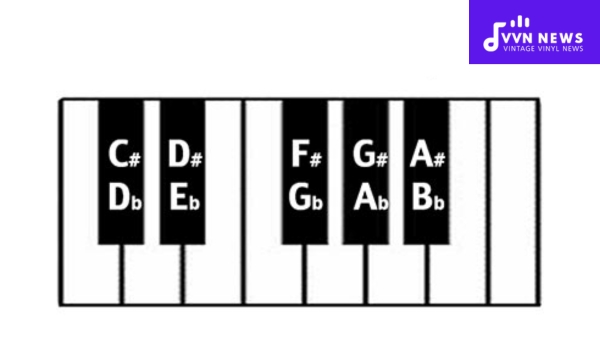
Enharmonic equivalence refers to two different notes that share the same pitch but are written using different notation symbols.
The use of double accidentals is closely tied to this concept, providing a means to express these enharmonic equivalents effectively. Let’s delve into the relationship between double accidentals and enharmonic equivalent notes:
- Enharmonic Equivalents: Enharmonic equivalents are notes that have different names but share the same pitch. For example, C♯ (C sharp) and D♭ (D flat) represent the same note on the piano keyboard, even though they have different names.
- Double Accidentals: In some instances, composers need to utilize enharmonic equivalents that involve a double accidental modification. This occurs when a note requires two half steps of modification in a specific musical context.
- Representation of Enharmonic Equivalents with Double Accidentals: The use of double accidentals allows musicians and composers to notate enharmonic equivalents accurately within their compositions. For example, if we consider E♯ (E sharp), which is already one step higher than E natural (without any accidental), applying another accidental raises it by two more half steps and becomes E???????? (E double-sharp). E♯ could also be notated as F???? (F double-sharp) since they both represent the same pitch.
- Contextual Use: The decision to use a specific enharmonic equivalent with a double accidental depends on the key signature, harmonic progression, modulation, or melodic pattern within a piece of music. Double accidentals are typically introduced when maintaining proper spelling and key relationships are crucial for performing a composition correctly.
In the relationship between double accidentals and enharmonic equivalences, musicians can accurately interpret the notation and produce the intended sound while performing a musical composition.
How to cancel out double-sharp sign-in sheet music?
When encountering a double sharp sign (????) in sheet music, it’s important to Know how to cancel out its effect and return the note to its original pitch.
Fortunately, the process for canceling out a double sharp is straightforward.
- Identify the note with the double sharp sign: Look for the note on the staff that has been marked with the double sharp.
- Determine the original note: Remember that a double sharp raises a note by two half steps. To find the original note, you need to lower it by two half steps.
- Consult the key signature: Check if there are any key signatures present at the beginning of the piece of music. The key signature will provide information about which notes are consistently sharp or flat throughout the composition.
- Apply any necessary adjustments from the key signature: If there are sharps or flats indicated in the key signature that corresponds to the note you’re working with, those alterations must be taken into account when canceling out the double sharp.
- Add natural symbol: Once you have determined the correct alteration for canceling out a double sharp, use a natural symbol (♮) in front of the note to indicate its natural state before any accidentals were applied.
For example, if we have C???? (C double-sharp), we need to lower it by two half steps. Since there is no key signature affecting C directly, we can apply an adjustment based solely on our knowledge. Cancelling out C???? gives us B♮ (B-natural).
By following these simple steps, musicians can effectively interpret sheet music containing double sharps and accurately play each note at its intended pitch within a composition.
Also Read: 13 Best Power Conditioners For Superior Protection [Buying Guide]
Double Sharp Vs Double Flat
In music notation, both the double sharp (????) and the double flat (????) symbols serve a similar purpose – they alter the pitch of a note by two half steps or a whole step.
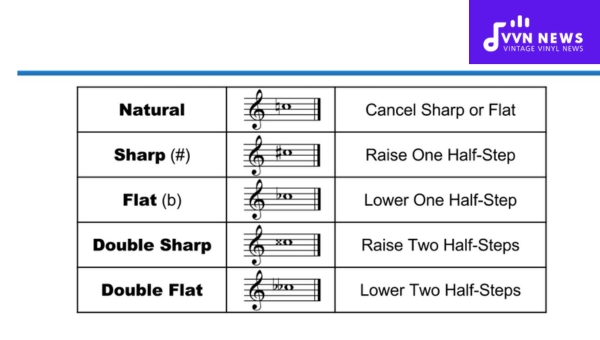
They work in opposite directions, with the double sharp raising a note’s pitch and the double flat lowering it. Let’s explore the key differences between these two symbols:
Double Sharp
- The double sharp sign consists of two parallel diagonal lines.
- It raises the pitch of a note by two half steps (two semitones) or one whole step.
- It is not commonly used but can be found in pieces that necessitate complex harmonic progressions or specific tonalities.
Double Flat
- The double flat sign features two parallel horizontal lines.
- It lowers the pitch of a note by two half steps (two semitones) or one whole step.
- Like the double sharp, it is less frequently used but may appear in compositions that require intricate harmonies.
Enharmonic Equivalents
Enharmonic equivalents refer to notes that sound the same despite having different notational representations.
When comparing double sharps and double flats, we can consider their relationship to enharmonic equivalents:
- A note raised by a double sharp is enharmonically equivalent to a note raised by one natural accidental or three half steps.
- Similarly, a note lowered by a double flat is enharmonically equivalent to a note lowered by one natural accidental or three half steps.
This relationship allows musicians to identify alternative notations for complex passages and facilitates communication when discussing musical nuances with fellow musicians.
Canceling Double Accidentals
To cancel out any accidental alteration in sheet music, including both double sharps and double flats, musicians use natural signs (∅).
Placing a natural sign before a note restores its natural pitch, effectively neutralizing the effects of the double accidental.
It is worth noting that music notation can vary slightly depending on the country or region. The fundamental principles behind double sharps and double flats remain consistent worldwide.
While both the double sharp and double flat symbols serve to alter the pitch of a note by two half steps, they operate in opposite directions.
Their distinctions and relationship to enharmonic equivalents allow musicians to accurately perform complex musical compositions and communicate effectively with their peers.
Also Read: Phrygian Mode [Adding Exotic Flair To Your Musical Compositions]
FAQs
How does a double sharp differ from a regular sharp?
A double sharp raises the pitch of a note by two-half steps, whereas a regular sharp only raises it by one-half step.
Can a note be represented with both a double sharp and a natural sign?
No, the natural sign cancels out any previous accidents, including the double sharp. It brings the note back to its original pitch.
Are there any instruments or genres of music that commonly use double sharps?
Double sharps can be found in various genres and instruments. They are often seen in complex classical compositions and occasionally in jazz or contemporary music.
How do composers decide when to use a double sharp instead of another accidental symbol?
Composers use double sharps when they want to establish specific tonalities or intricate harmonic progressions that require raising a note by two half steps instead of one.
Can a note be represented with both a double sharp and another accidental, like flat or natural?
Yes, notes can have multiple accidentals at once. The combined effect of these accidentals will determine the final pitch modification.
Also Read: 25 Best 80’s Female Singers [Remembering The Icons Of Pop Music]
Conclusion
The double sharp sign in music notation serves as a powerful tool for composers to alter the pitch of a note, raising it by two half steps. While relatively rare in usage, it plays a vital role in establishing specific tonalities and creating intricate harmonic progressions.
The impact of double sharps enhances musicians’ ability to accurately interpret and perform complex musical compositions. So next time you come across a double sharp in sheet music, embrace the opportunity to explore new musical heights!
